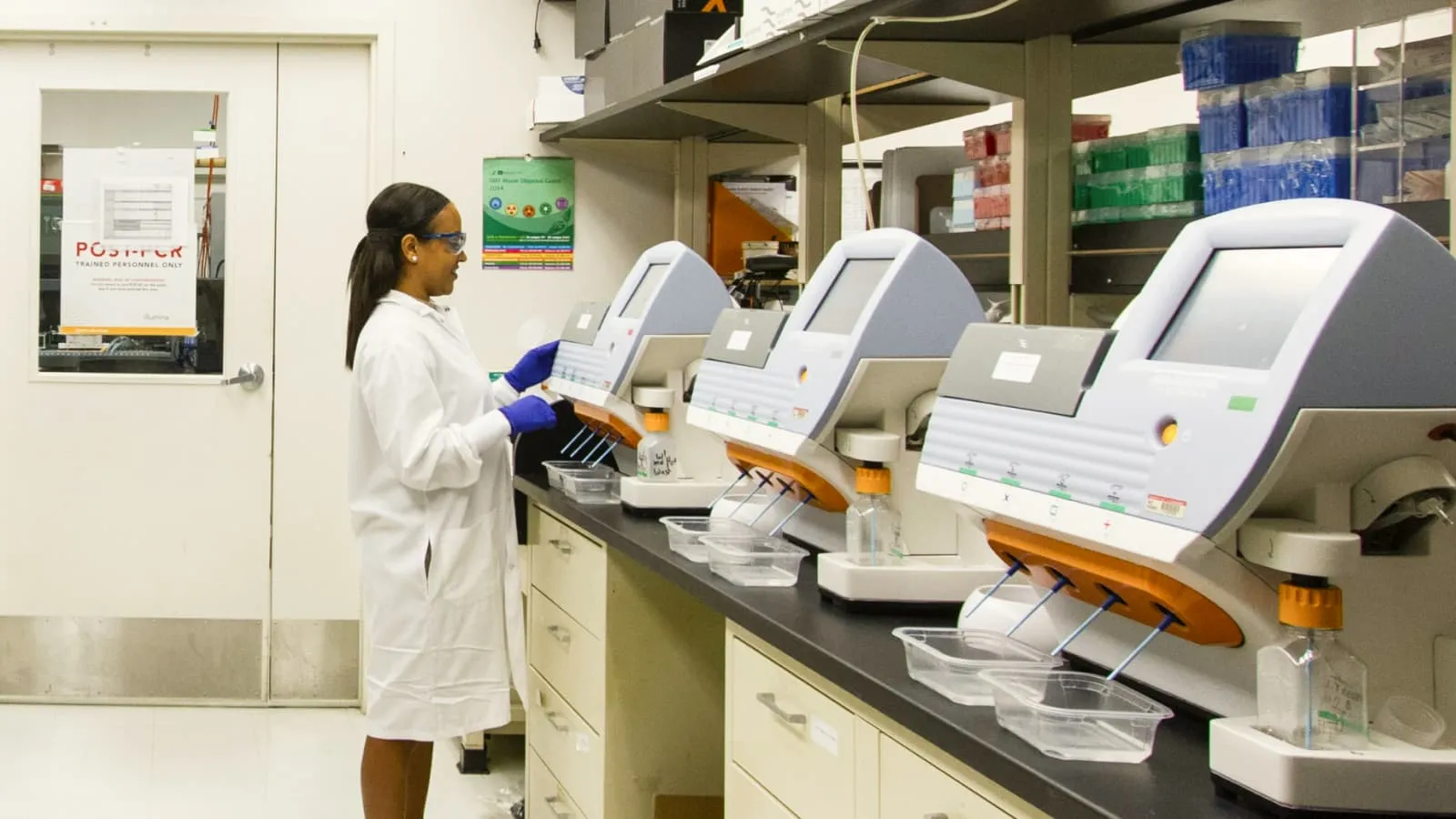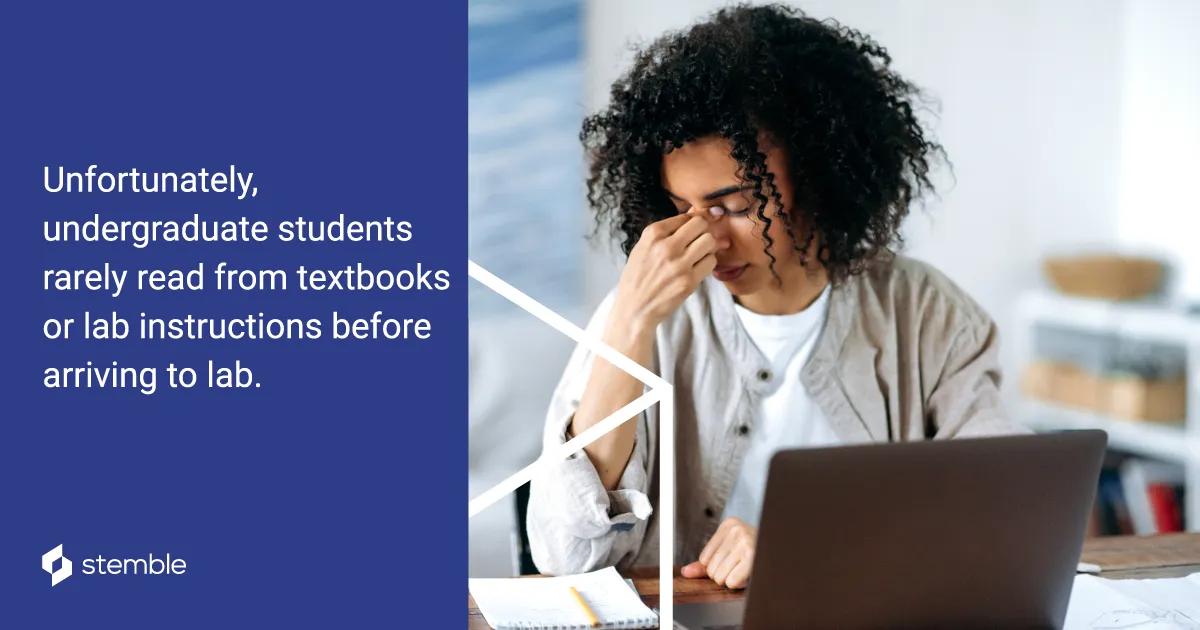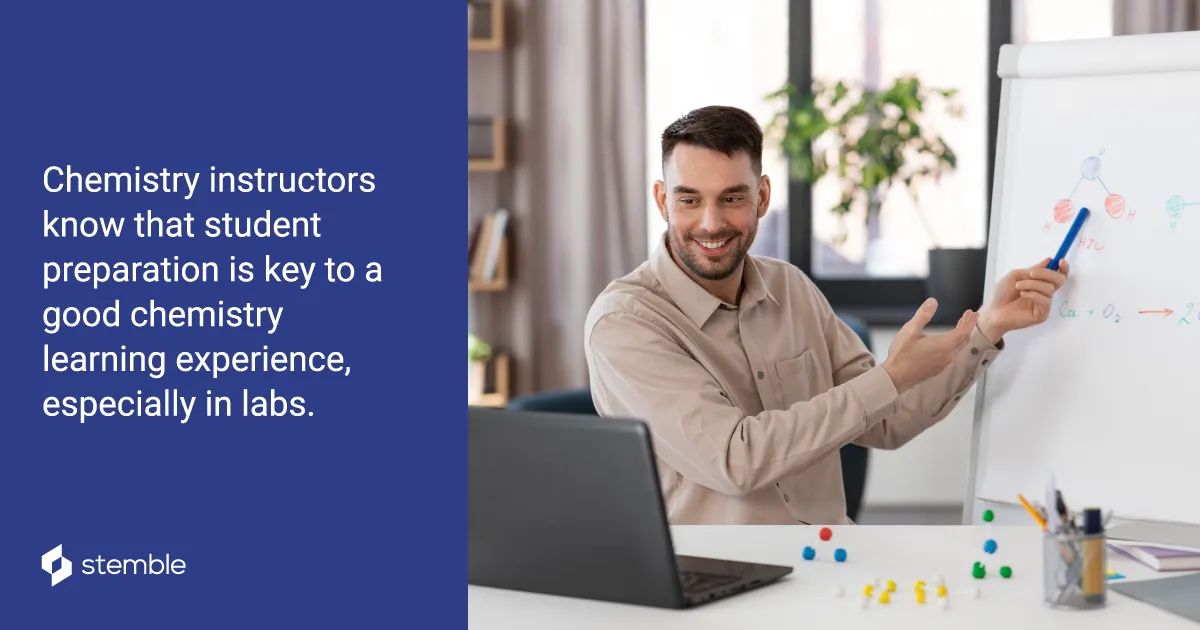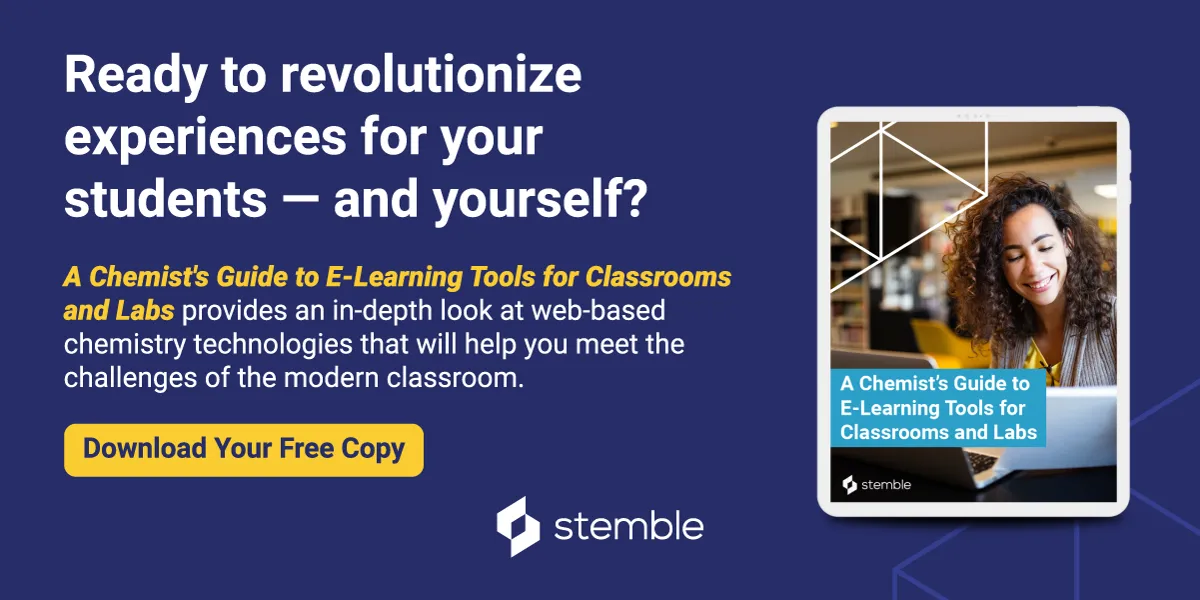How Chemistry Lab App Simulations Can Help Prepare Chemistry Students for Real Labs
If your students aren't showing up prepared for lab, chemistry lab app simulations can help tie into student motivation for more successful outcomes.
Prof. Jason Pearson, PhD

If you ask undergraduate general chemistry instructors what concerns them about students, lack of preparation for lab is usually at the top of the list.
Ultimately, the big question is: Does a chemistry lab app simulation allow a student to come to lab far more prepared than they would have if they just read a book about it?
The answer is: Absolutely.

What Does It Mean to Be Prepared for Lab?
No chemistry instructor needs to be sold on the value of lab preparation. The results of a student’s preparation are obvious. A student who isn’t prepared will be more disorganized, have less reliable outcomes, take longer to conduct their experiments, and will be frequently less aware of safety concerns than a student who is prepared.
It’s not a good experience for the student — or the instructor.
Lab preparation may seem straightforward to instructors. The steps don’t change, even though the experiments and materials do.
- Read through the lab experiment in advance
- Understand the steps that need to be taken
- Know what supplies (glassware, chemicals, and materials) are needed
- Be familiar with how the experiment will be set up and conducted
- Review relevant material safety data sheets (MSDSs)
- Know and understand the safety precautions that need to be followed, including how items used will be cleaned and disposed of
- Run any numbers (i.e. do the math) before beginning the experiment
However, students are frequently overwhelmed by lab preparation, which negatively affects their in-lab experiences — and their attitudes about chemistry.
Why Students Aren’t Prepared for Laboratory Work
While there may be many different reasons why students are not coming to the lab prepared, one fact is straightforward: Undergraduate students rarely read from textbooks or lab instructions before arriving to lab.
But why can they not just read the textbook? you may ask.
Because it doesn’t engage them, there’s no intrinsic motivation. And, because it’s hard to tie “read this textbook material” to a grade, there’s no extrinsic motivation either.
Other reasons include a lack of foundational science knowledge, unfamiliarity with equipment and materials, cognitive overload, and time management issues. Together, these factors coalesce into fear and anxiety of chemistry, which can be challenging for instructors to fully understand.
Students who struggle with preparation have confessed that their nervousness affects their desire to prepare for lab. There’s a lot of fear among students. We hear it from instructors all the time. They’re afraid to look stupid. They’re afraid to break things. They’re afraid of burning themselves. Textbooks and recitations aren’t helping students overcome those fears.
A University of Western Australia study reported that, “High anxiety has been found to negatively impact academic success, which could also lead to an increase in other negative feelings. Therefore, knowing what students are anxious about is a good first step in developing tailored interventions to further reduce negative feelings about the chemistry laboratory.”^1^
So, a key question is: how can students be empowered and prepared for the real lab so they’re not as afraid?
Understanding Undergrad Student Motivation
College students are motivated by a few key external and internal factors: grades, feedback, and self-confidence.
Grades
It isn’t surprising that grades are a basic external motivating factor for the majority of college students. After all, grades are the way that success is measured in an academic setting. While educators can debate whether that’s a good thing or a bad thing, students place value on grades. They understand the give and take of graded assignments and recognize their importance. However, grades alone are not as effective as they are when paired with proper feedback.
Feedback
Feedback is not only a way to help students improve their understanding of subject material, but it also provides students with information they can process and act upon. Unfortunately, in the modern university setting, feedback for general undergraduate student work is of high demand and short supply. There’s simply not enough time for instructors, including faculty and TAs, to provide individualized feedback to hundreds of students each term. This is unfortunate for students, who need, want, and deserve feedback to help them grow.
Self-Confidence
Increased self confidence is an incredible motivator across the board. Students who feel confident in their ability to approach labs are more able to have meaningful learning experiences with chemistry. This confidence impacts their opinion of the subject matter and has a direct impact on their course outcomes.
Providing students with evidence of their self-efficacy has a major effect on student outcomes, so reassuring students that they are capable of understanding and succeeding in chemistry is critical.

How Virtual Chemistry Apps Support Student Motivators
Whether or not they love chemistry, students want to succeed and have confidence in the lab. Educators understand that the key to both of these is preparation. And we understand that students are just not preparing for labs, so: how do we get them there?
There are many ways in which an online chemistry experience can improve student outcomes, especially when paired with traditional instruction.
Harnessing the Motivating Power of Grades
Nearly every undergrad student we’ve ever asked has confirmed that grades are their primary motivation — whether it’s to maximize grades or prevent failing ones. How do you harness that motivation? You attach a grade to a task or behavior.
Virtual chemistry apps allow educators to tie actions to grades in a way that is tangible, clear, and direct. In a virtual lab, grades can be attached to any outcome or any action that the students take. So if you want them to learn how to use a particular piece of equipment or go through a procedure, you can have the web app track and assign a grade to the student for doing it.
Do you need students to read the lab manual and answer some math problems? Are there questions that they should be able to answer before trying an experiment in the lab?
Now, imagine that in addition to those prelab requirements, you can also have a student virtually conduct the experiment, with grades attached to its completion.
While the fundamental reason that students are actually going to do it is because they have to and they’re going to be penalized if they don’t, once students engage they realize that it’s not so bad. Sometimes it’s even fun.
Providing Feedback that Matters
Every chemist has completed an experiment that had an unexpected result. How many times have you gone over your numbers and puzzled through what the heck happened that made the lab “fail.” It’s understandable that chemistry novices become frustrated when they can’t see exactly what has gone “wrong” while they work backwards.
But virtual chemistry simulations can pinpoint the moment where things go sideways, and allow a student to rewind and try it again. It’s the same with math problems and even concept questions. Students can try and try again until they get it right. (And even if it’s trial and error, they’re learning more every time.)
Some tools (like ours) can provide this feedback in real time, so students don’t ever have to wait for a lab to be graded before they learn what they need to understand better. This respects students’ time and effort and frees up instructional staff to focus more on students than their homework.
Improving Self-Confidence with Experiential Learning
Few people are excited about directly facing their fears, and avoiding what causes us anxiety is a pretty common human trait, especially for undergraduate students. Helping students manage and overcome their fears (making mistakes, looking foolish, breaking something, safety incidents, etc.) is vital to their self-confidence in the chemistry lab.
Reading a book, referencing a packet of paper, or watching a video may give students a sense of what they “should” be doing, but as we can see, these are not working as well as we educators wish.
Therefore, we look to the old proverb for guidance: “Tell me and I’ll forget. Show me and I might remember. But let me do it and I’ll remember forever.” Students who have experiential learning via virtual chemistry labs have greater confidence in the in-person lab, and they’re more efficient (in fact, students have completed labs 25% faster after using our virtual lab simulations.)
Making sure that students are prepared for labs is not only important from an academic and safety perspective, but it’s also an act of kindness that leads to self-efficacy. In fact, a 2019 study of first-generation college student participation in an online preparatory organic chemistry course suggested that such experiences may benefit some students’ self-efficacy in demanding science courses. This had a strong influence on learning and ongoing student motivation.^2^
Ongoing Benefits of Student Preparation
Chemistry instructors know that student preparation is key to a good chemistry learning experience, especially in labs.
You want students to be familiar with material, understand what has to be accomplished, know how to be safe and efficient, and be well-prepared. Students want to stop feeling overwhelmed and stressed about chemistry labs. And we all want to come away at the end of the course with undergraduate students having learned some chemistry.
By leveraging student motivators with an interactive chemistry lab app that appeals to modern students, they’re more apt to complete homework assignments and engage with materials they need to understand. Automated feedback helps students understand the topic better, which increases their confidence. Their increased confidence allows them to overcome their fears and approach the in-person lab with the belief that they will succeed.
Using virtual chemistry tools, instructors can stop being homework guides and safety officers and can finally focus on their real goal — teaching students how to be chemists. Which, of course, includes how to be ready to work in a live lab environment.
Chem lab apps and in-person learning work a bit like a chemical oscillator — one reaction causes another reaction to happen, and it just goes on and on. But unlike in the lab, if done well, this particular cycle can go on indefinitely.
^1 ^Rummey,_ C., Clemons, T.D., & Spagnoli, D. (2019). The impact of several demographic factors on chemistry laboratory anxiety and self-efficacy in students’ first year of university. Student Success, 10(1), 87-98. doi: 10.5204/ssj.v10i1.1104_
^2 ^Zhou, N., Fischer, C., Rodriguez, F. et al. Exploring how enrolling in an online organic chemistry preparation course relates to students’ self-efficacy. J Comput High Educ 32, 505—528 (2020). https://doi.org/10.1007/s12528-019-09244-9

Prof. Jason Pearson, PhD
Co-Founder
Jason Pearson is a Professor of Chemistry at the University of Prince Edward Island, where he leads an interdisciplinary research group in computational methods for chemistry. He is also co-founder of Stemble Learning, a data-driven teaching and learning platform for chemistry classes and laboratories. He is the winner of numerous SoTL awards including the Reg Friesen Award from the Chem. Ed. Division of the CSC, The Hessian Award, The Janet Pottie Murray Award for Educational Leadership, and the Brightspace Award for Innovation in Teaching and Learning from the STLHE.
